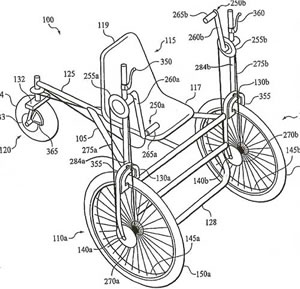|
Design Features
The Mobility Cycle has two front drive wheels propelled by hand cranks.
The rear wheel steering is accomplished by pivoting the seat and is modulated
by actuator springs. The absence of front wheel steering eliminates the
high risk of accidents and injuries from tipping over that are associated
with nearly every tricycle wheelchair design that is used in developing
countries.
Each wheel hub includes three forward gears and one reverse gear. These
can be operated independently or in unison.
The Mobility Cycle is adjustable along all three axes (x,y,z) to enable
optimal positioning for the rider in relation to seating, propulsion
and steering. It is constructed of readily available and easily repairable
bicycle components, and includes a tubular frame of 4130 chrome molly
steel.
An early prototype of the mobility cycle has been used for two years
by a 17 year old girl who has 3 limbs disabled by polio. She is able
to propel and brake using only her right arm. A young boy with four
limbs severely affected by rickets also uses the cycle in an isolated
village setting. The low gearing, 24 inch front wheels and seat-activated
steering make this possible. Neither of these children would be able
to use a conventional push rim or tricycle wheelchair design.
Multiple worldwide patents insure that high levels of quality and important
safety features are maintained for mobility cycles produced in all regions
of the world.

|